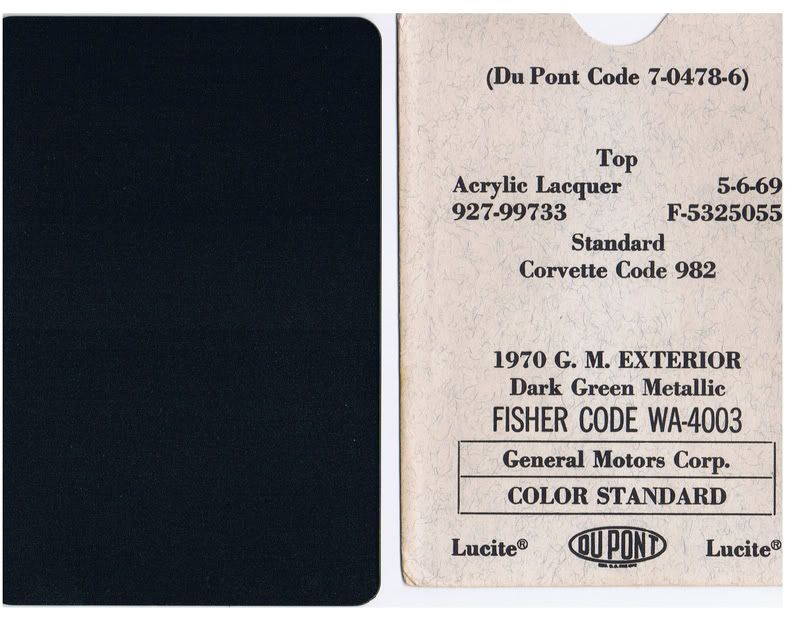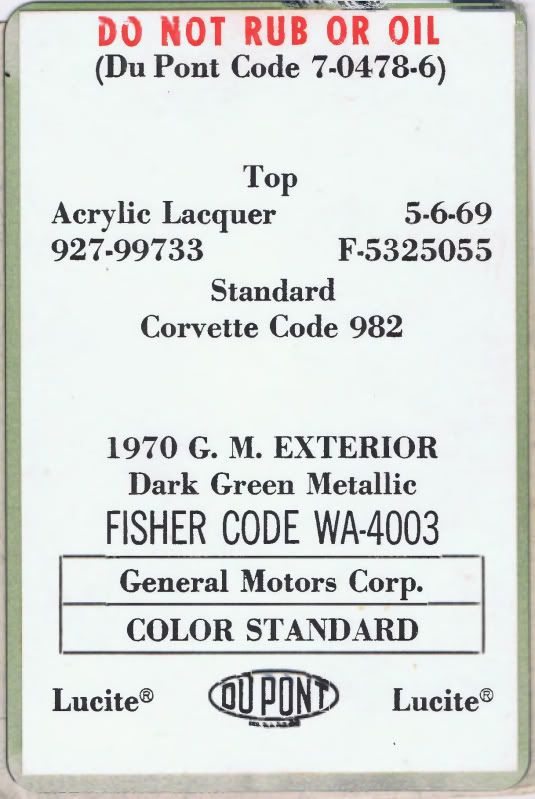Re: Color Match Issue
Even the metal standards used by the plant can be an issue. The paint company keeps the "official" standards in a fridge, in the dark to keep the color from moving. The stardards today are compared to readings off a color computer to check and see if they are still valid. The computer readings do not move so are the most accurate. Once a standard has been deemed to have moved out of spec, a new standard is created to meet the color spec and replaces the old standard at the plant that is used for QC checks. So, the metal panels that are floating around may or may not be a good color match to what was the original color. They will be close but not perfect i.e. a Delta E reading of .5 or less by the color computer. Anything over a .5 is a visible difference to the human eye. Problem in matching colors for 50's, 60's and 70's cars is the leaded prigments that were used then and not available now. The color can be matched sometimes close enough with modern pigments but other times the color will match under say daylight and look completly different at an indoor meet. You see cars are meets all the time that are supposed to be the same color but look completely different. Pull them outside or inside and all of the sudden they look alike. This is due to arriving at the "same" color using different pigments.
Steve
Even the metal standards used by the plant can be an issue. The paint company keeps the "official" standards in a fridge, in the dark to keep the color from moving. The stardards today are compared to readings off a color computer to check and see if they are still valid. The computer readings do not move so are the most accurate. Once a standard has been deemed to have moved out of spec, a new standard is created to meet the color spec and replaces the old standard at the plant that is used for QC checks. So, the metal panels that are floating around may or may not be a good color match to what was the original color. They will be close but not perfect i.e. a Delta E reading of .5 or less by the color computer. Anything over a .5 is a visible difference to the human eye. Problem in matching colors for 50's, 60's and 70's cars is the leaded prigments that were used then and not available now. The color can be matched sometimes close enough with modern pigments but other times the color will match under say daylight and look completly different at an indoor meet. You see cars are meets all the time that are supposed to be the same color but look completely different. Pull them outside or inside and all of the sudden they look alike. This is due to arriving at the "same" color using different pigments.
Steve




Comment